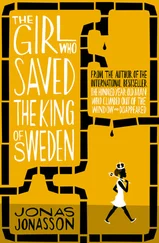
Stieg Larsson
The Girl Who Kicked The Hornets’ Nest
The third book in the Millennium series, 2009
Translated from the Swedish by Reg Keeland, 2009
Originally published in Sweden as Luftslottet Som Sprängdes, 2007
PART I. INTERMEZZO IN A CORRIDOR
8 – 12.IV
It is estimated that some six hundred women served during the American Civil War. They had signed up disguised as men. Hollywood has missed a significant chapter of cultural history here – or is this history ideologically too difficult to deal with? Historians have often struggled to deal with women who do not respect gender distinctions, and nowhere is that distinction more sharply drawn than in the question of armed combat. (Even today, it can cause controversy having a woman on a typically Swedish moose hunt.)
But from antiquity to modern times, there are many stories of female warriors, of Amazons. The best known find their way into the history books as warrior queens, rulers as well as leaders. They have been forced to act as any Churchill, Stalin, or Roosevelt: Semiramis from Nineveh, who shaped the Assyrian Empire, and Boudicca, who led one of the bloodiest English revolts against the Roman forces of occupation, to cite just two. Boudicca is honoured with a statue on the Thames at Westminster Bridge, right opposite Big Ben. Be sure to say hello to her if you happen to pass by.
On the other hand, history is quite reticent about women who were common soldiers, who bore arms, belonged to regiments, and played their part in battle on the same terms as men. Hardly a war has been waged without women soldiers in the ranks.
FRIDAY, 8.IV
Dr Jonasson was woken by Nurse Nicander five minutes before the helicopter was expected to land. It was just before 1.30 in the morning.
“What?” he said, confused.
“Rescue Service helicopter coming in. Two patients. An injured man and a younger woman. The woman has a gunshot wound.”
“Alright,” Jonasson said wearily.
He felt groggy although he had slept for only half an hour. He was on the night shift in A.&E. at Sahlgrenska hospital in Göteborg. It had been a strenuous evening. Since he had come on duty at 6.00 p.m., the hospital had received four victims of a head-on collision outside Lindome. One was pronounced D.O.A. He had treated a waitress whose legs had been scalded in an accident at a restaurant on Avenyn, and he had saved the life of a four-year-old boy who arrived at the hospital with respiratory failure after swallowing the wheel of a toy car. He had patched up a girl who had ridden her bike into a ditch that the road-repair department had chosen to dig close to the end of a bike path; the warning barriers had been tipped into the hole. She had fourteen stitches in her face and would need two new front teeth. Jonasson had also sewn part of a thumb back on to an enthusiastic carpenter who had managed to slice it off.
By 12.30 the steady flow of emergency cases had eased off. He had made a round to check on the state of his patients, and then gone back to the staff bedroom to try to rest for a while. He was on duty until 6.00 in the morning, and seldom got the chance to sleep even if no emergency patients came in. But this time he had fallen asleep almost as soon as he turned out the light.
Nurse Nicander handed him a cup of tea. She had not been given any details about the incoming cases.
Jonasson saw lightning out over the sea. He knew that the helicopter was coming in in the nick of time. All of a sudden a heavy downpour lashed at the window. The storm had moved in over Göteborg.
He heard the sound of the chopper and watched as it banked through the storm squalls down towards the helipad. For a second he held his breath when the pilot seemed to have difficulty controlling the aircraft. Then it vanished from his field of view and he heard the engine slowing to land. He took a hasty swallow of his tea and set down the cup.
Jonasson met them in the emergency admissions area. The other doctor on duty, Katarina Holm, took on the first patient who was wheeled in – an elderly man with his head bandaged, apparently with a serious wound to the face. Jonasson was left with the second patient, the woman who had been shot. He did a quick visual examination: it looked like she was a teenager, very dirty and bloody, and severely wounded. He lifted the blanket that the Rescue Service had wrapped round her body and saw that the wounds to her hip and shoulder were bandaged with duct tape, which he considered a pretty clever idea. The tape kept bacteria out and the blood in. One bullet had entered the outer side of her hip and gone straight through the muscle tissue. Then he gently raised her shoulder and located the entry wound in her back. There was no exit wound: the round was still inside her shoulder. He hoped it had not penetrated her lung, and since he did not see any blood in the woman’s mouth he concluded that probably it had not.
“Radiology,” he told the nurse in attendance. That was all he needed to say.
Then he cut away the bandage that the emergency team had wrapped round her skull. He froze when he saw another entry wound. The woman had been shot in the head and there was no exit wound there either.
Dr Jonasson paused for a second, looking down at the girl. He felt dejected. He had often described his job as being like that of a goalkeeper. Every day people came to his place of work in varying conditions but with one objective: to get help. It could be an old woman who had collapsed from a heart attack in the Nordstan galleria, or a fourteen-year-old boy whose left lung had been pierced by a screwdriver, or a teenage girl who had taken ecstasy and danced for eighteen hours straight before collapsing, blue in the face. They were victims of accidents at work or of violent abuse at home. They were tiny children savaged by dogs on Vasaplatsen, or Handy Harrys, who only meant to saw a few planks with their Black&Deckers and in some mysterious way managed to slice right into their wrist-bones.
So Dr Jonasson was the goalkeeper who stood between the patient and Fonus Funeral Service. His job was to decide what to do. If he made the wrong decision, the patient might die or perhaps wake up disabled for life. Most often he made the right decision, because the vast majority of injured people had an obvious and specific problem. A stab wound to the lung or a crushing injury after a car crash were both particular and recognizable problems that could be dealt with. The survival of the patient depended on the extent of the damage and on Dr Jonasson’s skill.
There were two kinds of injury that he hated. One was a serious burn case, because no matter what measures he took it would almost inevitably result in a lifetime of suffering. The second was an injury to the brain.
The girl on the gurney could live with a piece of lead in her hip and a piece of lead in her shoulder. But a piece of lead inside her brain was a trauma of a wholly different magnitude. He was suddenly aware of Nurse Nicander saying something.
“Sorry. I wasn’t listening.”
“It’s her.”
“What do you mean?”
“It’s Lisbeth Salander. The girl they’ve been hunting for the past few weeks, for the triple murder in Stockholm.”
Jonasson looked again at the unconscious patient’s face. He realized at once that Nurse Nicander was right. He and the whole of Sweden had seen her passport photograph on billboards outside every newspaper kiosk for weeks. And now the murderer herself had been shot, which was surely poetic justice of a sort.
Читать дальше













